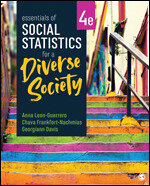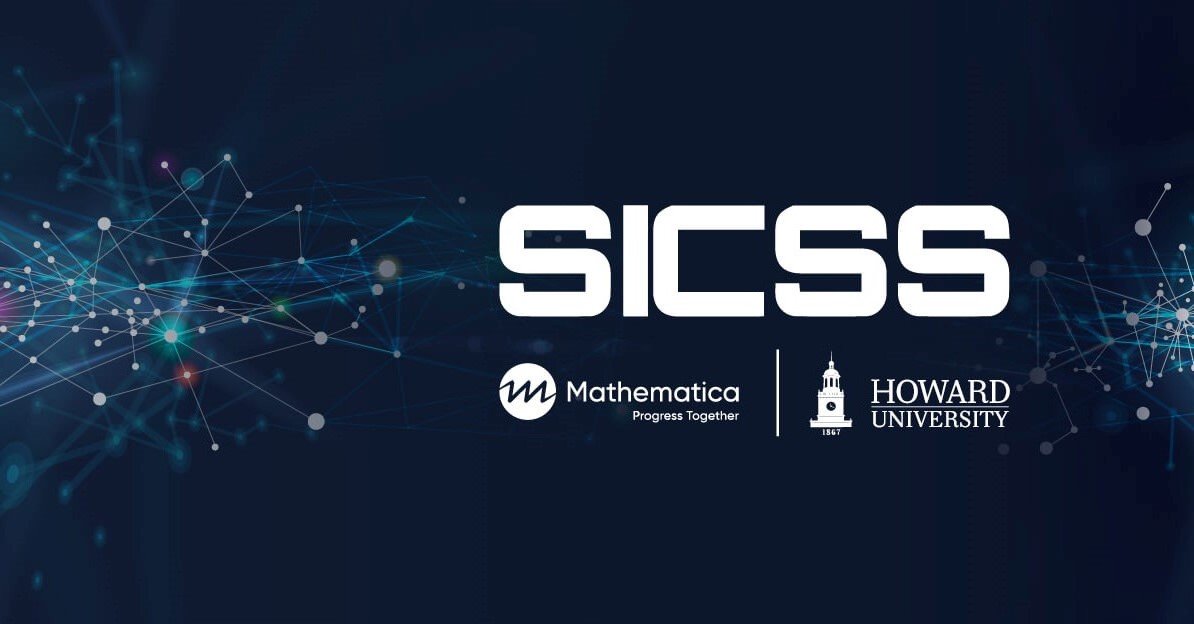Social Statistics for a Culturally Diverse Society: Interview with the Authors
We often think about cultural studies from a qualitative perspective, through stories or observations. However, quantitative data are essential for understanding the scope and depth of cultural matters. Two recent books from SAGE offer the opportunity to learn about statistics in the context of diversity and social problems: Social Statistics for a Diverse Society and Essentials of Social Statistics for a Diverse Society. With the code MSPACEQ322 you receive a 20% discount when you order the books from SAGE through September 30, 2022.
Given that these are issues we are trying to understand at this time, I wanted to learn more. Here are some answers from co-authors Anna Leon-Guerrero and Georgiann Davis.
JS. Please define social statistics for our readers.
Authors. Social scientists rely on empirical data collection and analytical techniques to better understand the relationship between individuals, groups and social structures.
Our text introduces quantitative data analyses, defining social statistics as “a set of procedures used by social scientists to organize, summarize and communicate numerical information.”
JS. What does it take for someone to become an informed reader who is able to understand the data we see in the news?
Authors. We invite folks to approach data from a social science angle asking how, for example, numbers represent individual lives and the social structures we navigate. Numbers are just numbers but are transformed depending on how they are analyzed and interpreted. One of our favorite quotes about sociological data analysis comes from Peter Berger (1963:11), “Statistical data by themselves do not make sociology. They become sociology when they are sociologically interpreted, put within a theoretical frame of reference that is sociological.”
An informed reader would benefit from having a general understanding of a wide range of social theories. Theories help inform all aspects of the research process from the questions researchers ask, to how data are collected and analyzed, to how one makes sense of the data.
The reader should also ask questions about the research methodology (i.e. how were the data collected, is the sample representative of the population) and the specific analytical techniques.
JS. Your preface points to the importance of statistics for understanding our social world, especially at this time. Please discuss your use of “real world” issues for examples and contexts for the lessons in statistical concepts.
Authors. We introduce statistical techniques with pressing social issues of particular concern to society and to social scientists like us. Our goal has long been to use “real” data to better engage students in their learning and to replicate what we do as sociologists - work with real data.
Other statistics textbooks incorporate fictional data problems and illustrations. We have some fictional data examples, but the majority of our in-chapter and end of chapter exercises are based on data drawn from recent news stories, public opinion polls, government reports, scholarly research and General Social Survey data from the National Opinion Research Center.
Explain your commitment to diversity. I am sure that some readers will think that numbers are numbers—how does your approach help readers understand the importance of statistical tools to understand race, class, gender, and other aspects of diversity?
Authors. Our commitment to diversity is exemplified in our utilization of “real” data to reflect on contemporary social issues related to race, class, gender, and other categories of inequalities. This approach is valuable because it allows readers to develop statistical skills while simultaneously learning about topical social issues.
JS. We recently focused on mixed methods on MethodSpace. How can qualitative or mixed methods researchers benefit from an understanding of social statistics?
Authors. Qualitative researchers can draw on quantitative data to situate their descriptive findings within larger socio-historical, economic, and political context. For example, many ethnographers use U.S. Census data to paint the background portrait of the communities they study.
Qualitative data can also generate research questions for quantitative inquiries by statisticians. When ethnographers report surprising findings about the communities they study, quantitative scholars often develop large scale studies to investigate if the qualitative findings are generalizable.
Mixed methods researchers utilize a combination of qualitative and quantitative methodologies in the same project to study a given phenomenon. Their research questions are often unique and necessitate multifaceted data. They might, for instance, develop and administer a quantitative survey about a social issue, while simultaneously conducting in-depth interviews and/or focus groups about the same social issue with a handful of participants.
JS.Please distinguish between your books, the full text and Essentials text.What kinds of courses would benefit from one or the other?
Authors. We recommend using our full text, Social Statistics for a Diverse Society, for semester long courses or for a two-course sequence. Courses with a linked lab experience would also benefit from using our full text. A set of SPSS and Excel demonstrations and exercises are included at the end of each chapter for easy reference.
Our Essentials of Social Statistics for a Diverse Society text can be used for courses on the quarter system. Instructors who teach statistics without a required lab should also consider the Essentials version. Essentials is more compact while still retaining the depth and rigor of Social Statistics for a Diverse Society. For example, in Essentials, the chapters on measures of central tendency and variability were combined. The SPSS and Excel demonstrations and exercises are available online.
With each new edition, we update the General Social Survey and other real data illustrations in the chapters, the dataset demonstrations, and the end of chapter exercises. In this edition, we created a set of Excel demonstrations and exercises to go along with our SPSS demonstrations.
We now also offer SPSS and Excel video demonstrations. These video demonstrations, available online, offer users step-by-step audio-visual instructions of how to use SPSS and Excel to analyze quantitative data.
JS. Are these texts of value outside of a classroom setting?
Authors. In addition to their utility inside college classrooms, both Social Statistics for a Diverse Society and Essentials of Social Statistics for a Diverse Society are valuable resources for inquiring minds. They teach readers how to use statistical tools to analyze and present quantitative data. Through our “Reading the Research Literature” features, readers will learn how to interpret scholarly quantitative articles. Our texts also offer step-by-step instructions one can follow if they are interested in using SPSS and/or Excel to assist in this process. Analyzing and presenting quantitative data are useful skills for anyone working with numeric data be it a purchasing agent navigating inventory and sales or a human resources specialist preparing a report on salaries and fringe benefits.





















Paula Moreno, founder of Manos Visibles & first Afro-Colombian woman to serve as Minister of Culture of Colombia, delivered the first SICSS-Howard/Mathematica Motivational Address, focused on the technological challenges and solutions for Africans and people of African descent around the world.